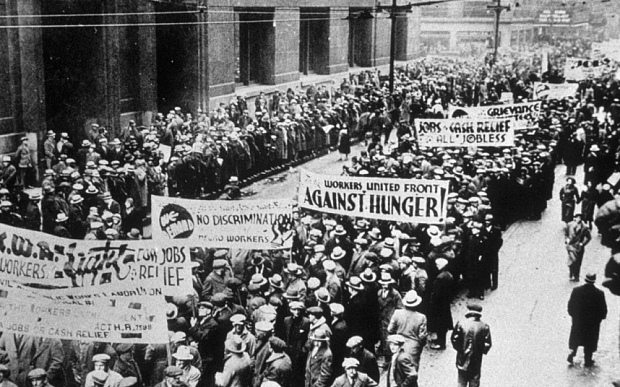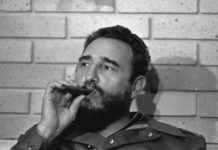Last year I read the first part of Helena Sheehan’s autobiography Navigating the Zeitgeist. I am looking forward to the second volume which we are told will be out in the next year. In her writing, Sheehan makes reference to the New Left movements that sprung up in the United States during the middle to late 1960s, on college campuses, in workplaces and in the streets. These were characterised by opposition to American militarism abroad and the promotion of social and economic rights at home but why was the movement called the New Left? Reading Gornick’s re-published (first published in 1977) The Romance of American Communism helps the reader understand why.
Before the New Left, was the Left, mainly under the guise of the CPUSA. In the 1920s and early 1930s, as capitalism in America was finding its feet after the First World War, a set of movements that had been coalescing around the IWW and associated struggles came to fruition. Both urban and rural working Americans knew the excesses of the system they had worked under, exposed so readily by the market crashes of 1929.
In truth, many workers’ movements had made themselves known in the US from the last decade of the 19th century when the working class had swollen and organised against an increasingly expansionist capitalist class. The end of the first industrial accumulation there brought its own struggles. While African Americans were formally free to sell their labour power alongside their white comrades, US cities were polarised centres. By the 1920s, the contradictions of enormous wealth and crushing poverty were cut through with racism and housing segregation. Red-lining was becoming apparent and the cities of the east coast were buckling under the pressures of increased populations of poor immigrants from Europe and southerners migrating north. In this atmosphere, the Communist Party of the United States (CPUSA) grew and grew fast. In its early days after 1919, there were just a few hundred members, spurred on by the developments in the new Soviet Union. By the early 1940s, it had expanded to nearly 75,000 members.
Gornick tells the stories of a small number of these members, having grown up herself in a radical household and thus having a familial empathy. She constructs a set of narratives from people who joined in the 1930s, many of whom had come from poor households struggling with poor working conditions and seasonal-dependent agricultural work. The narratives she uses and the lives she recalls are full of passion and fire for the Revolution to come. The Party grew rapidly in the 1930s because people wanted change: a historic break with the order of the ruling classes and with capitalism. They met in houses on the lower east side in New York and in small neighbourhoods of Jewish and German workers across the US. They made common cause over seemingly imminent revolutionary effort and in the daily grind of the factory floor and the street. They drank and read and talked, and then drank some more and fell out over the details of their next plan. They had sexual relationships which endured over years, which often, for lack of affection or forced migration, breaking up rancorously. They tried their best to bend the unions to their efforts, often being the most radical person at a meeting and being thrown out for agitation.
What Gornick relates through these short narratives above all is a sense that time was running out for capitalism in America and the CPUSA was its best chance to hasten this. This was the Left that the New Left inherited in later decades. It was organised, it was red and it was about to win.

Stalking the stories that Gornick relates are the events that occurred after the 20th Congress Report of the CPSU given by Khruschev in February 1956. Gornick goes to meet people in their homes, spends a few hours with them asking them about their time in CPUSA. All of them had left in the years after the 1956 Congress in the SU. Looking back, as she was, from the late 1970s, it was perhaps easier for Gornick to ascribe the decline of the great fervency that was the CPUSA to the Congress report than to another set of circumstances. But it does seem instead that the CPUSA did not survive the war effort. By the time the Americans entered the war in 1940, many of the people she spoke to were well into their 20s and wanted to contribute to the war effort. An event from one ex-CPUSA member tells the story: the CIA’s forerunner, the OSS, recruited many CPUSA members because they were so good at organising and infiltrating. They were able to get involved in organisations and keep their own counsel. They had learned in their late teens and 20s that the Party was all-consuming and gladly sunk themselves into it. Along comes a larger state-organised entity and asks them to play their part, with a salary to boot.
What is spoken about is the turn taken after the Stalin-Hitler non-aggression pact and how it divided up the Party. What goes unmentioned during the narratives she relates is the fact that after World War II, many of the CPUSA did not return from the exertions of two war fronts, fighting both authoritarians and fascists. For some Gornick interviewed, they spent the years after the war coming to terms with the fact that fascism had been defeated in Europe but they had never expected it in the United States, as the New Deal compromises of the 1930s metastasized into McCarthyite paranoia and anti-Communism. In short, they found themselves unable to re-attach themselves to an organisation that was under severe pressure and had not prepared well enough for the post-war period.

Gornick tells us about the people that went underground, moved across the country, and assumed other identities to escape the purview of the revanchist anti-Communist state. She does not tell us the institutional and organisational imperatives that made that necessary and thus the process of going underground remains obscured by the effects of the Khrushchev letter. There is a bitterness amongst many of the ex-CPUSA members towards their early fervency and the efforts that they made trying to bring the Revolution to fruition but show me a Communist who doesn’t have regrets about things he or she has done in their youth? Some she interviewed for this book remained loyal to the class struggle while others completely up-ended their lives and disavowed their past selves. This is not that interesting a story on its own: the individual struggles that people endured read well on a broader canvass or as part of a biography, not in 1000 word synopses. For the non-US reader, there is little local flavour to give you a sense of the broader political and geographical contexts within which these people were formed and into which they fled.
It is not an uninteresting set of personal stories and tragedies. Gornick relates well to the people she speaks with and wants us to understand their circumstances. I recognised several stereotypes of communists and socialists in the book as having correlatives here in Ireland; anyone involved in a left wing movement in Ireland will know of the endless meetings and the personal frictions that occur. And the paper-selling. I had not expected to read about the internal CPUSA trials of members against whom charges were made: for being weak on the picket, for telling the wrong person the right things, and for sleeping with the wrong person. In Gornick’s accounts of these episodes, in particular, there is little to relate other than that someone has been trialled and then expelled. Perhaps this is a function of the personal trauma that people had experienced at this time, with a Party that was turning inward under threat, and not, as a good strategist might have recommended, externally defensive. However, Gornick lets the Khruschev letter hang above all events as if this were the largest factor in the failure of the CPUSA. She reserves the most colour for the telling of the personal narratives of the disavowed. It is interesting to me that the greatest effort at relating the material circumstances of former members is kept for those who are now (at the time of writing in 1977) most avowedly anti-Communist. She spends a two day period with a cantankerous ex-member who abuses her verbally and treats her badly and yet this is the person that is characterised as having the most humanity. In the end, Gornick’s book is an engaging recollection of the development of 20th century Communist movements in the United States, albeit shorn of the things that undoubtedly make it one of the most vital and interesting social formations of that century: the struggles themselves.





